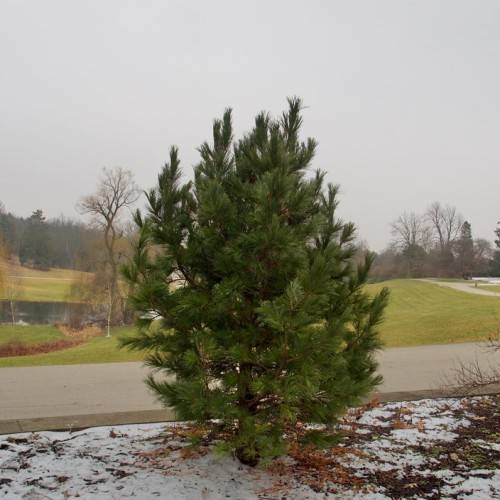
Swiss stone pine
Pinus cembra 'Herman' PRAIRIE STATESMAN
Cycle:
Perennial
Watering:
Minimum
Hardiness Zone:
2 - 7
Flowers:
Flowers
Sun:
Full sun
Cones:
Yes
Leaf:
Yes
Growth Rate:
Low
Maintenance:
Low
Drought Tolerant:
Yes
Salt Tolerant:
Yes
Care Level:
Medium
watering
In general, Swiss stone pine (Pinus cembra 'Herman' Prairie Statesman) should be watered every 7-10 days during its spring and summer growing season. The frequency of watering will depend on the conditions in your yard—more frequent watering may be needed in extremely hot, dry weather. Be careful not to overwater, as the roots of the Swiss stone pine prefer soils that are continuously moist but not actively wet. Water thoroughly, deeply, and slowly, allowing the water to reach down to the root level of the tree. During fall and winter, you can gradually reduce the frequency of watering to once a month. When the temperature drops below freezing, stop watering altogether.
sunlight
Swiss stone pine (Pinus cembra 'Herman' PRAIRIE STATESMAN) is best grown in full sun, receiving at least 6-8 hours of direct sunlight per day during the spring and summer to promote healthy growth and flowering. In fall and winter, it should still receive some direct sunshine to ensure proper winter growth, although it does not require as much as it does during the warmer months. It is important to note that it can become scorched in full midday summer sun, and therefore should be given some relief from the harshest rays if possible.
pruning
Swiss Stone Pine (Pinus cembra 'Herman' PRAIRIE STATESMAN) should be pruned early in the spring as new growth begins. Pruning should be minimal, removing only dead, broken, or diseased branches. You can also prune if you want to reduce the overall size of the plant, but it should only be done by an experienced pruner, as this particular species tends to sprout from the wounds created by pruning. This type of pruning is usually done in late winter before new growth begins. Pruning should also be done regularly to maintain the shape and health of the plant.
